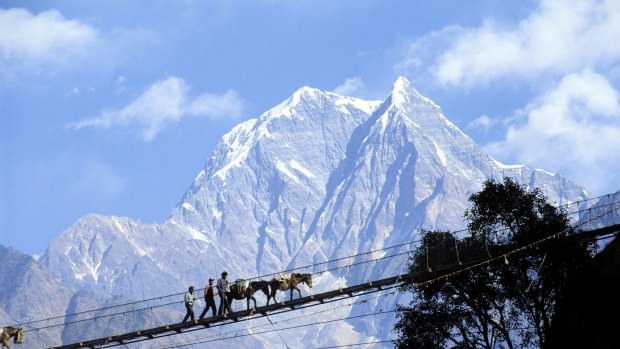This was published 9 years ago
What lessons can be learnt from the snowstorms that caused Nepal's trekking disaster in Annapurna?

Nepal, the Annapurnas region, a suspension footbridge above the Kali Gandaki river. Credit: AFP
Travel with an operator you can trust.
Many trekkers on popular routes in Nepal save money by hiring unlicensed guides, who lack the equipment, the training and the skills to anticipate a problem, or to deal with it when it happens.
The severe snowstorm that lashed the mountain on 14 October was caused by Cyclone Hudhud, which made landfall on the Indian mainland two days before.
Autumn is the peak of Nepal's trekking season, and conditions are typically calm, but the cyclone had been tracked for several days, its path into the Himalayas was predicted.
Indian meteorologists had already described it as the most destructive tropical cyclone ever to hit the country.
When trekkers left the guesthouse on the Annapurna Circuit early on the morning of 14 October to cross 5,416-metre Thorong La, it was snowing heavily.
Throughout that day the snowfalls and wind intensified, leaving trekkers and porters disoriented and suffering from hypothermia that took many lives, and causing an avalanche which resulted in more deaths.
Many of those who survived suffered frostbite.
At least one trekking operator who was aware of the approaching storm stopped clients from proceeding into the area.
Satellite phones could have alerted more to the severity of the storm, preventing them from leaving shelter to cross the high pass that morning.
If you're setting out on a remote area trek, an experienced guide familiar with the terrain and equipped with oxygen, appropriate medications, emergency survival gear and a satellite phone are essential.
Sign up for the Traveller Deals newsletter
Get exclusive travel deals delivered straight to your inbox. Sign up now.